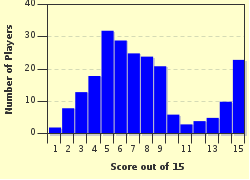Quiz Answer Key and Fun Facts
1. Most people know that Benjamin Franklin was the first to conceive the idea of daylight saving time while he was a delegate in Paris in 1784, but who was the first person to design and propose a practical way to implement it?
2. Even though they were not on daylight saving yet, which country was the first to adopt one standard time throughout a region?
3. When did the United States go to a standard time?
4. What is the primary reasons that 02:00 in the morning was set as that changeover time in the United States?
5. Do countries close to the equator gain as much increase in daylight during DST as those farther from it?
6. Based on a study by the Carnegie Mellon Institute, which of the following statements is true?
7. Which country adopted daylight saving time in 1991 with the National Measurement Amendment Bill?
8. Which country was the first to officially adopt a system of daylight saving time?
9. What piece of legislation standardized DST in the United States and when?
10. What was it called when Britain put their summer clocks two hours ahead of GMT during World War II?
11. Japan went to the use of daylight saving when they were occupied by the U.S. after World War II. Why did they stop using DST in 1952?
12. Which of the following U.S. states does not observe DST?
13. When did Mexico adopt DST?
14. Until 2011, how did Russia vary daylight saving time?
15. Until 2005, which U.S. state allowed each county to determine whether to observe DST?
Source: Author
pshelton
This quiz was reviewed by FunTrivia editor
trident before going online.
Any errors found in FunTrivia content are routinely corrected through our feedback system.

